
It's here: Our game-changing guide to everyone's favorite room in the house. Your Do-Anything Kitchen gathers the smartest ideas and savviest tricks—from our community, test kitchen, and cooks we love—to help transform your space into its best self.
Grab your copyPopular on Food52
45 Comments
Ellen
January 28, 2018
Here's a method that saves dirty dishes and is easy: Put the cream into a wide-mouth pint mason jar, roll it back and forth with your foot (for about 15- 20 min?) while watching TV. Rinse and knead the butter with a spoon right in the jar, draining as needed. Refrigerate in the jar! No scraping or cleanup required.
Ralph A.
January 4, 2018
I've been making butter for several years and I have a few tips.
1.. Buy the very inexpensive Oster Top Chopper (Target, uder $30.00).
It's the least messy and QUICK butter churn (Very heavy cream approx. 2 minutes).. Pour cream into the 4 cup container.
2. For a better tasting butter. European style, buy some sour cream Culture . (Amazon appox $10 ).
3. For Aromatic butter (popcorn type) add a pinch of LIPASE enzyme. ( Cheese making supply house).
4. Add Culture to cream (optional Lipase), Wait 24 hours at 70 to 75 degrees,
5. Press Top Chop motor button and when looks like yellow cottage cheese...
6. Rinse until no milky liquid shows.
7. Use in a week, or Freeze for a year.
If you don't freeze it, make sure as much milk solids have been rinse away. Otherwise, butter will mold.
1.. Buy the very inexpensive Oster Top Chopper (Target, uder $30.00).
It's the least messy and QUICK butter churn (Very heavy cream approx. 2 minutes).. Pour cream into the 4 cup container.
2. For a better tasting butter. European style, buy some sour cream Culture . (Amazon appox $10 ).
3. For Aromatic butter (popcorn type) add a pinch of LIPASE enzyme. ( Cheese making supply house).
4. Add Culture to cream (optional Lipase), Wait 24 hours at 70 to 75 degrees,
5. Press Top Chop motor button and when looks like yellow cottage cheese...
6. Rinse until no milky liquid shows.
7. Use in a week, or Freeze for a year.
If you don't freeze it, make sure as much milk solids have been rinse away. Otherwise, butter will mold.
Terry
June 30, 2017
I've been making butter at home for a few years now, since a few months after I started buying raw milk (for my "pets"...ahem...) and pouring off the cream. Making raw ice cream took some experimenting and the cream sometimes soured in the meantime. I quickly got tired of finding recipes calling for copious amounts of sour cream (although this was as real as sour cream gets!). So I started making butter, first in my stand mixer like others here; and when that got too messy with the "breaking" announcing itself all over the walls and countertop I switched to my food processor. As someone suggested I also "wash" the butter after draining off the buttermilk and store it in flat, roundish patties wrapped in brown wax paper in the fridge. This gets used for toast, pancakes - anything calling for a bit o' butter that doesn't involve baking, melting or otherwise defeating the purpose of all those good bacterial critters. I've also made use of ultra-pasteurized store-bought cream, but first I re-pasteurize it by boiling and then "culture" it with a bit of yogurt to make creme fraiche first. Making butter from spoiled pasteurized cream is dangerous.
Avon L.
May 15, 2017
Sorry to burst your bubble but what you'd get from this method using fresh cream is NOT real buttermilk. In the old days, butter was made from cultured cream, like yogurt. So the reside was also cultured.
Sarah D.
May 31, 2017
They were saying that the resulting liquid isn't buttermilk, which is true. It's just skim milk. If it was cultured it would be buttermilk.
Peggy
April 19, 2017
When I was in first grade (1957) my class sat around in a circle taking turns shaking a jar of cream singing "come butter come, come butter come, johnnys in.......that's all of the song I remember. Once we had butter, we were each given some on a saltine cracker.
Sarah D.
May 31, 2017
I teach cooking to elementary students and this is my favorite lesson! It works best with room temp cream. We usually put it on crackers with home grown radishes.
Penny H.
April 16, 2017
Many years ago I happened to buy some whipping cream that was a little past it's prime. When I tried to make whipping cream with my stand mixer, I got butter instead. Beats shaking a jar or turning a butter churn.
Tina C.
April 14, 2017
I have a "butter churner" jar (knockoff of Kilner?), but have yet to use it. This has inspired me. I've also added some of my Coffee Syrup to butter, blended it in to make "Coffee Butter". It is AMAZING, and I'm not just saying that to tout my little business. Though, of course, I'd love for more people to learn about my Coffee Syrup - ESPECIALLY creative bakers - since it can be used in so many recipes! I've made (ok, going Forest Gump Bubba here) Coffee Chantilly Cream for Cream Puffs, Coffee Caramels, Coffee Soda, Coffee Panna Cotta... and Coffee Butter. Always trying new recipes where I can swap in Coffee Syrup for sugar or maple syrup. Would love to hear others' ideas!
https://www.facebook.com/sweetandcutesweets
https://www.facebook.com/sweetandcutesweets
Amateur F.
January 5, 2017
I am definitely making my own buttermilk for my next Irish soda bread! Yum
JanetMoh
June 26, 2016
A great way to keep butter fresh is to store it in the mason jar. You just cover it with a layer of water. See here: http://chocolateitswhatsfordinner.blogspot.com/2014/03/its-better-with-butter.html
Saffron3
January 13, 2016
Hi there. Thanks Amanda for this article. I get so busy I forget to try new small things that are fun. I don't have a mixer or food processor, and all that shaking will help per workouts! I like the 'play' of shake-them-biceps!
Winifred R.
January 10, 2016
Not to be rude with the formula, but it's 1 (cream) + 1 (energy from agitation) = 2 (butter + buttermilk). Yeah, too many science and engineering classes, but this is the more correct equation.
drunkenboxer
January 22, 2016
Respectfully disagree.
Food science is arguably a branch of organic chemistry, which does not include energy as a reactant or product when writing a reaction. (Energy is sometimes written above or below the reaction arrows, but nobody would argue that "2H20 <-> 2H2 + O2" is incorrect because it doesn't include reaction energy.)
Also, in a standard recipe, which this is (rather than a complicated molecular gastronomy recipe requiring calibrated equipment), heating/cooling requirements (187* water bath for sous vide) aren't usually written as ingredients. You might as well argue that the mason jar isn't included as a catalyst in the reaction.
Besides, this is meant to be light and enjoyable reading/cooking/eating.
Food science is arguably a branch of organic chemistry, which does not include energy as a reactant or product when writing a reaction. (Energy is sometimes written above or below the reaction arrows, but nobody would argue that "2H20 <-> 2H2 + O2" is incorrect because it doesn't include reaction energy.)
Also, in a standard recipe, which this is (rather than a complicated molecular gastronomy recipe requiring calibrated equipment), heating/cooling requirements (187* water bath for sous vide) aren't usually written as ingredients. You might as well argue that the mason jar isn't included as a catalyst in the reaction.
Besides, this is meant to be light and enjoyable reading/cooking/eating.
drunkenboxer
January 22, 2016
Hmm, my bidirectional arrow was excluded from my equation after "2H2O". The parser probably interpreted it as html.
Laura M.
March 22, 2017
The mason jar is mos def not a catalyst. It's the apparatus.
Guys, scientific debate is the best.
Guys, scientific debate is the best.
Bee
May 18, 2015
I accidentally "made butter" when I was 8 years old, when I over-whipped the whipping cream and !Surprise!, it turned into butter, which was promptly fed to the dog. LOL I'm confused about the "washing of the butter"--if I use a hand beater to whip heavy cream to the butter stage again, do I just dump that butter into a bowl and then run COLD water over it for a bit? What keeps the butter from breaking up and just going down the drain? Thanks to anyone who cares to answer a novice butter maker. :D
Mei C.
May 19, 2015
Bee, when you take the butter from your mixing vessel, you want to press and mold it into a shape, kind of like a gentle kneading. This will squeeze more of the buttermilk from the butter mixture and will also make the butter stick together like, well, a big lump of butter—I like to do this part over a large strainer or colander. From there, just gently rinse with cold water. All this does is wash away the buttermilk from your final product—it will be done when the water runs clear off the butter. I also recommend bundling it in cheesecloth and letting it hang from your kitchen faucet to drain a little more for an hour or so, so that the water runs off the butter, too.
kitwilliams
May 16, 2015
Cultured butter, as Anita Burns mentioned, is truly the way you want to go. Your butter will have flavor and your buttermilk will have the tang it is meant to. ALL butter in this country used to be cultured: dairy farmers would keep the cream from several days' milkings during which time the cream would ferment slightly. Nowadays, those of us who don't live near grass-fed dairy cattle, must resort to buying whatever we can lay our hands on, usually ultra-pastreurized cream which will not ferment as easily as pasteurized cream. We have to help these creams along by adding buttermilk to the cream, letting it sit 24 hours or so at room temperature which, in turn, makes creme fraiche and THAT is what is churned to make cultured butter. And it and the buttermilk are just amazing. Do this once a week or so and you'll then have your own buttermilk with which to culture your cream, rather than the stuff they call "buttermilk" in the grocery stores which is not the by-product of butter-making, but simply low-fat milk with culture added. And yes, you must wash the butter and get as much of the water out as possible (butter muslin helps here), then work the salt in (if you want salted butter), which not only distributes the salt, but the working of the butter is important to create that intensely silky, creamy-smooth, dense texture of a high-quality, high-fat butter (oh...I neglected to mention you want HEAVY cream or HEAVY WHIPPING cream, not just WHIPPING cream which is lower in butterfat. I've become addicted to not only my own butter and buttermilk, but to the process itself. It is so satisfying.
Monica
April 25, 2017
How much buttermilk should you add to 1 pint of Heavy whipping cream or should you use a quart of heavy whipping cream? Also, thanks for sharing your knowledge about making cultured butter. I have muslin for straining but do I need to get muslin that is specifically called "butter muslin "? How many layers or plys should I use? Thanks!
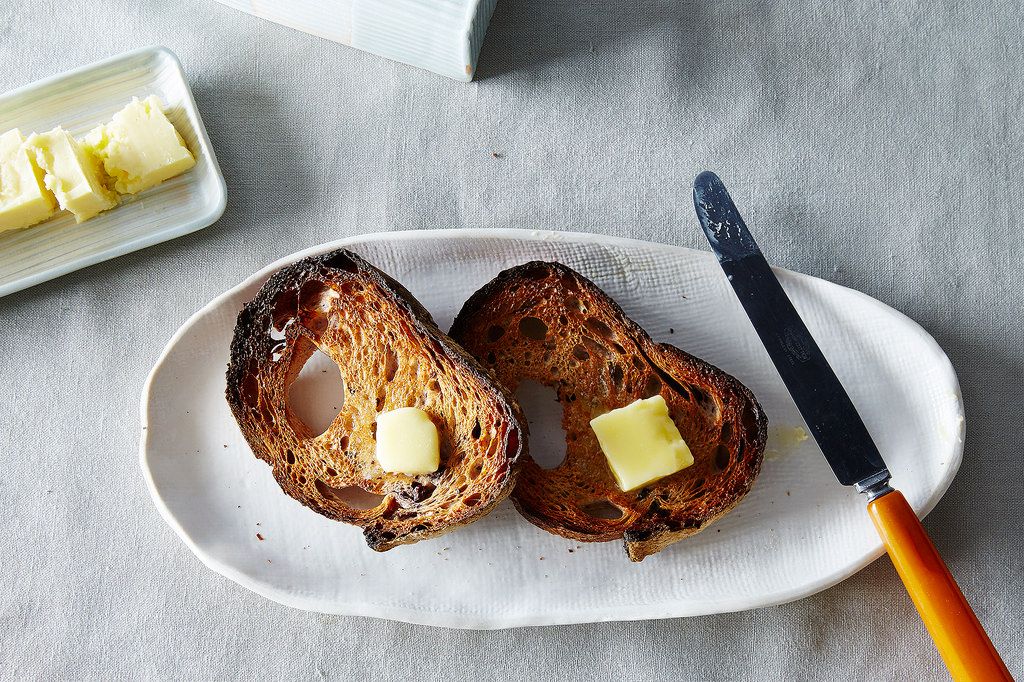 This batch of rustic homemade butter looks right at home in our new
This batch of rustic homemade butter looks right at home in our new 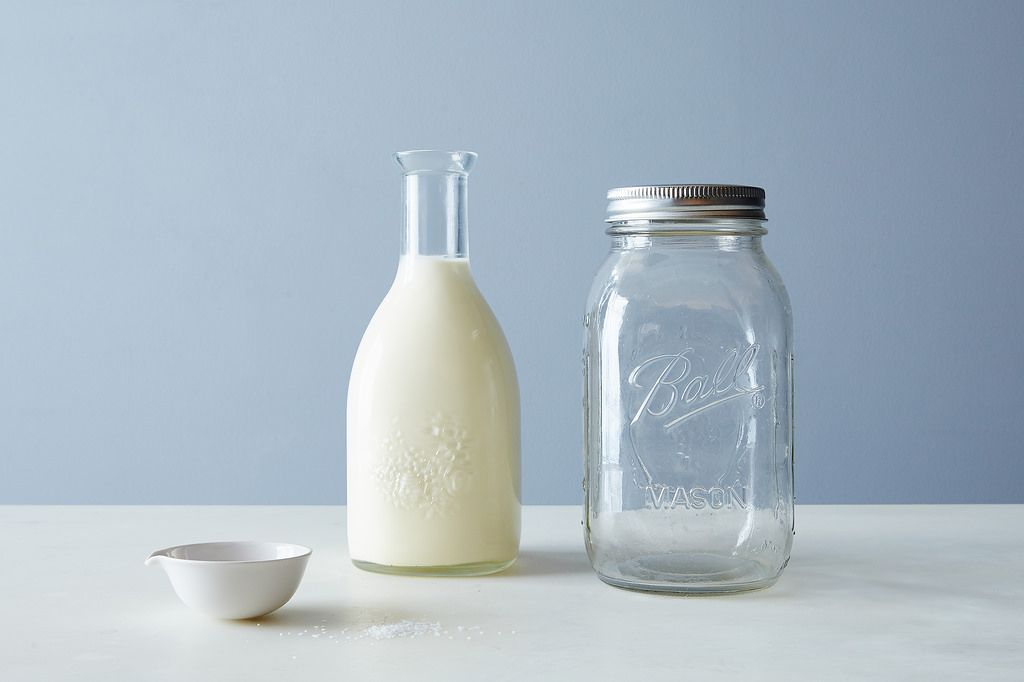
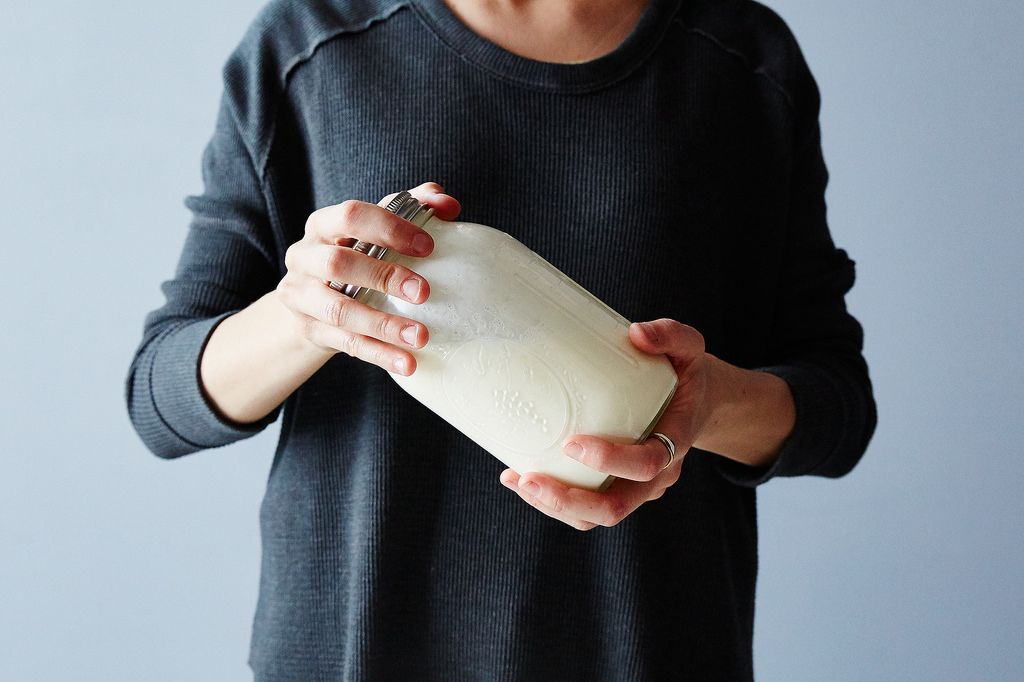
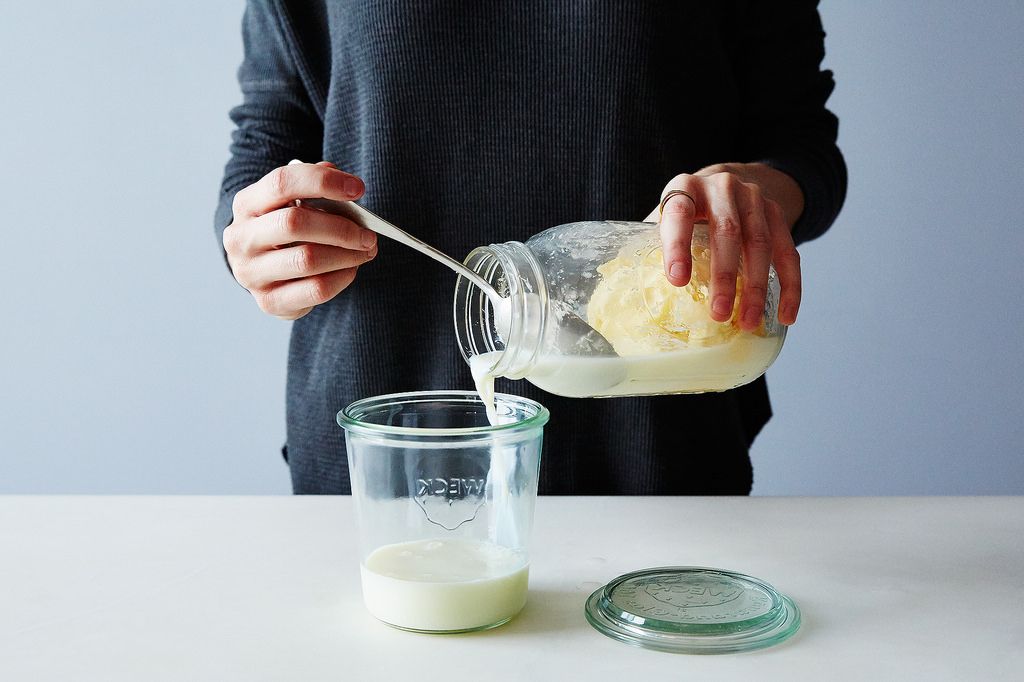
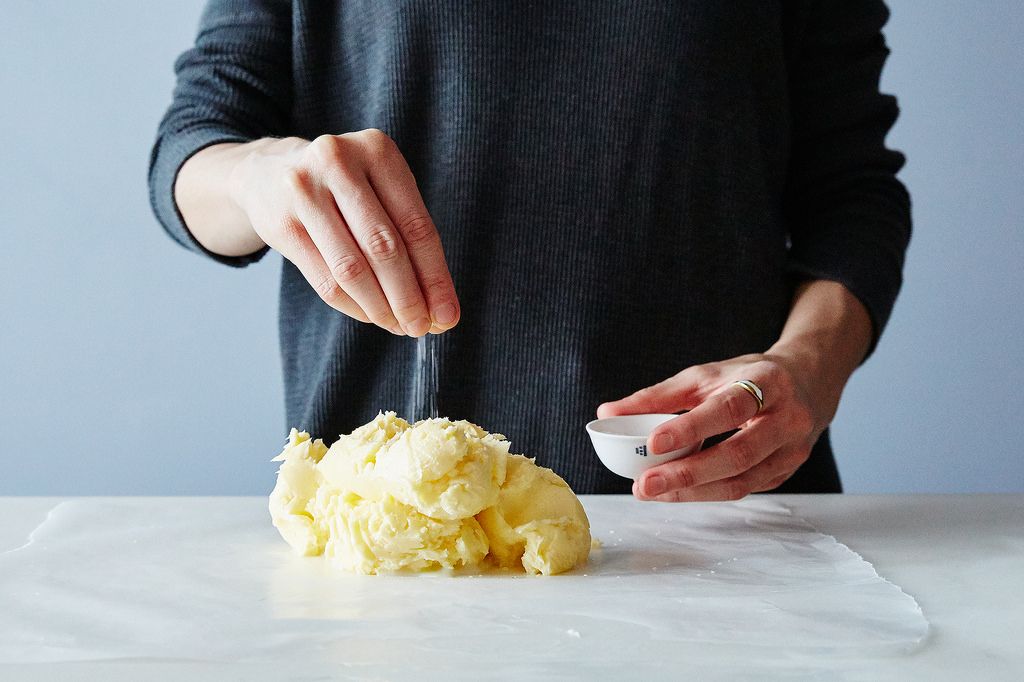
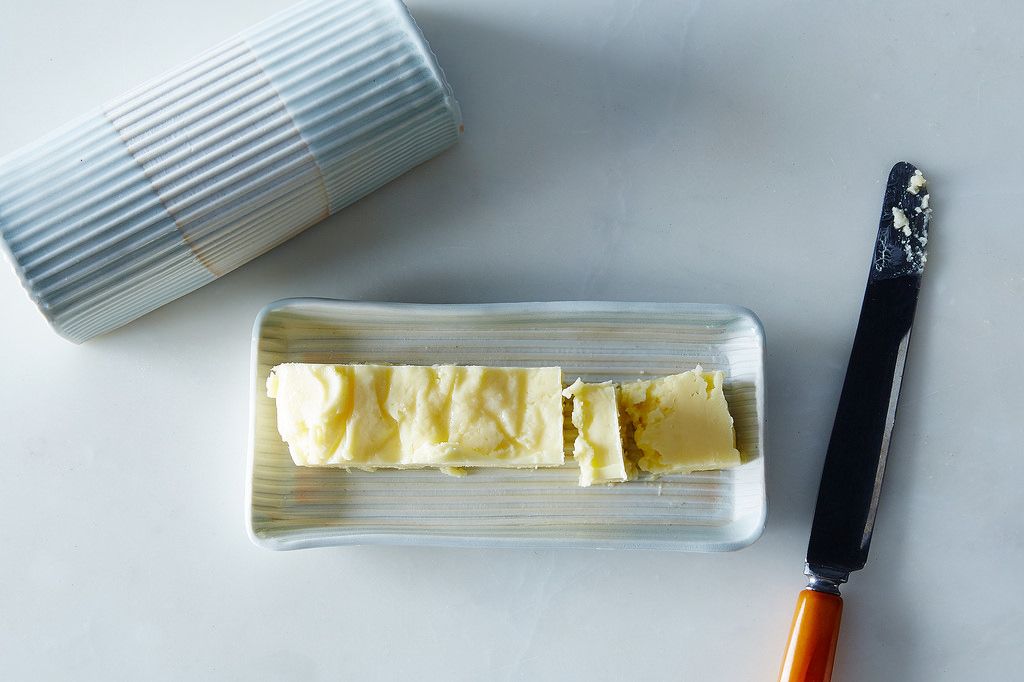
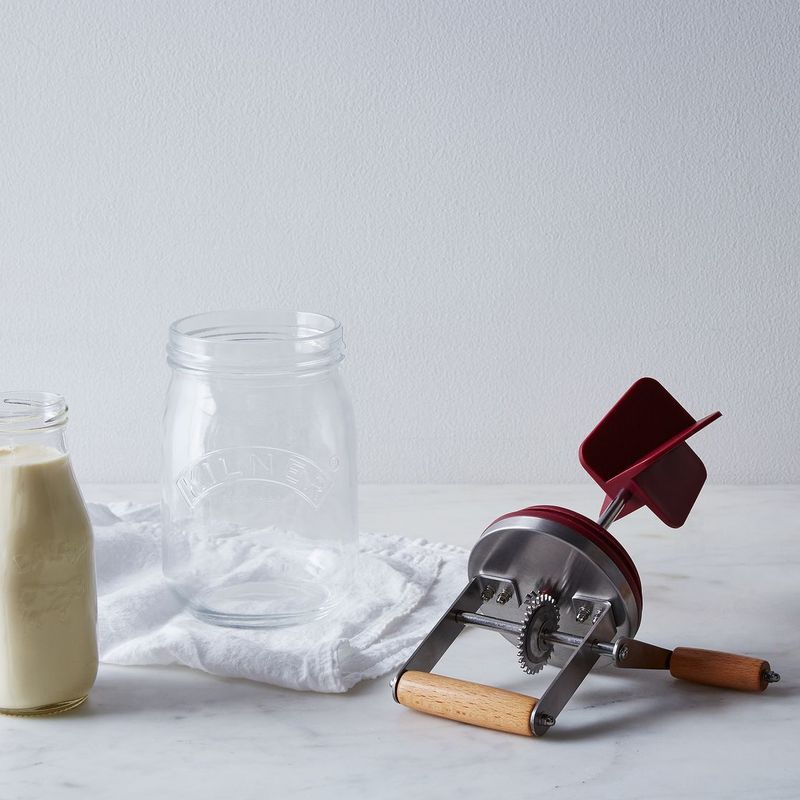 That cream is just a churn away, thanks to the
That cream is just a churn away, thanks to the 
See what other Food52 readers are saying.